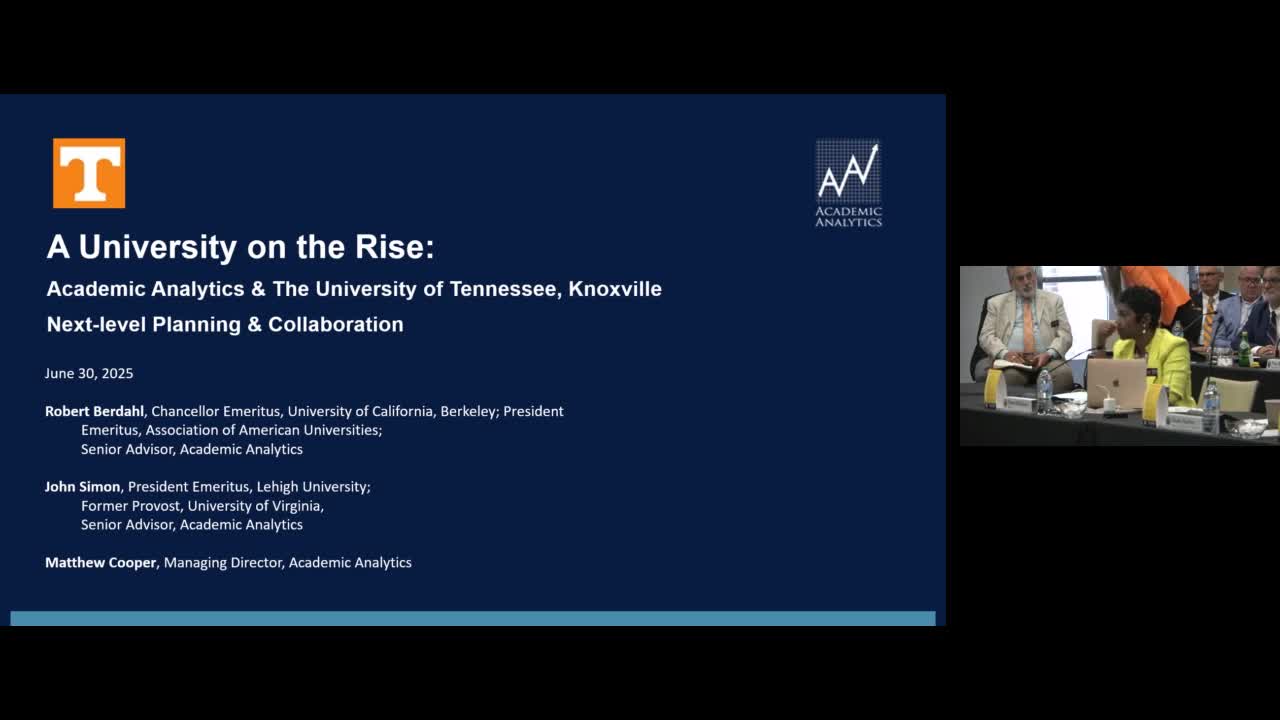University of Tennessee at Martin targets 10000 student enrollment by 2030
June 30, 2025 | University of Tennessee System, Public Universities, School Districts, Tennessee
Thanks to Scribe from Workplace AI , all articles about Tennessee are free for you to enjoy throughout 2025!

This article was created by AI using a video recording of the meeting. It summarizes the key points discussed, but for full details and context, please refer to the video of the full meeting. Link to Full Meeting
A key focus of the meeting was the University of Tennessee at Martin's (UTM) strategic enrollment management plan, which aims to reach an enrollment of 10,000 students by 2030. Presenters emphasized that this goal is not merely aspirational but grounded in a comprehensive approach that includes expanding academic programs, enhancing student support services, and improving retention rates. UTM has already seen a remarkable 44% increase in enrollment, attributed to targeted marketing and the introduction of new programs such as Cybersecurity and a Master of Social Work. The plan also includes innovative strategies like a "Shark Tank" initiative, where faculty and staff proposed enrollment strategies, fostering a collaborative environment for growth.
The committee also discussed the University of Tennessee Knoxville's (UTK) enrollment strategy, which aims to grow to 55,000 students by 2030. This plan is built on a foundation of recent successes, including record retention rates and increased applications from high-achieving students. UTK's strategy emphasizes the importance of online education, with plans to expand online offerings significantly to meet the needs of adult learners and those with some college credit but no degree. The university aims to produce 50,000 new graduates to support Tennessee's workforce, particularly in high-demand fields such as health and IT.
Both campuses acknowledged the challenges posed by declining high school graduation rates in Tennessee, particularly in the coming years. However, they expressed optimism about future growth, citing projections that indicate a rebound in high school populations after 2028. The discussions underscored the need for proactive infrastructure planning to accommodate the anticipated increase in student enrollment, including housing and academic space.
In conclusion, the meeting highlighted the University of Tennessee System's commitment to enhancing educational access and success for students across the state. With strategic enrollment plans in place, both UTM and UTK are poised to play a critical role in addressing Tennessee's workforce needs while fostering a vibrant academic community. The next steps will involve continuous evaluation of these strategies to ensure they remain responsive to demographic trends and student needs.
Converted from Education, Research and Service Committee, June 30, 2025 meeting on June 30, 2025
Link to Full Meeting
Comments
View full meeting
This article is based on a recent meeting—watch the full video and explore the complete transcript for deeper insights into the discussion.
View full meeting